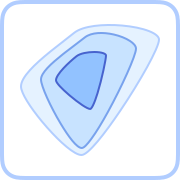Product Introduction
Embedding Atlas is an open-source tool developed by Apple for visualizing and analyzing high-dimensional embedding data through interactive web-based interfaces. It enables users to explore large-scale embeddings (up to millions of points) with real-time rendering and metadata integration. The tool supports dynamic filtering, clustering, and search functionalities to reveal patterns in complex datasets. It is designed for machine learning practitioners working with embeddings from models like LLMs or neural networks.
The core value lies in its ability to make abstract embedding spaces visually interpretable and interactively explorable at scale. It bridges the gap between raw numerical embeddings and actionable insights by providing GPU-accelerated visualization paired with metadata cross-filtering. This enables users to validate model outputs, identify data clusters, and detect outliers more effectively than static plotting methods.
Main Features
The tool automatically performs data clustering and labeling using advanced algorithms to group similar embeddings, with configurable parameters for cluster granularity. This helps users quickly identify semantic groupings without manual annotation. Cluster labels can be refined through direct interaction with the visualization interface.
Kernel density estimation (KDE) and density contour overlays visually highlight data concentration patterns, enabling differentiation between dense regions and sparse outliers. The adaptive bandwidth KDE implementation ensures accurate representation of varying data distributions. Users can toggle between contour modes to analyze cluster boundaries and data point density gradients.
Order-independent transparency rendering eliminates visual artifacts caused by overlapping points through advanced WebGL/WebGPU compositing techniques. This ensures accurate representation of high-density areas while maintaining individual point visibility. The rendering pipeline supports customizable color encoding and point size adjustments for optimal visual clarity.
Real-time search functionality allows users to find nearest neighbors for text queries or selected data points using cosine similarity or other distance metrics. The system supports bulk similarity comparisons across entire datasets, with results instantly visualized through coordinated highlighting across all interface panels. Search indices are optimized for low-latency responses even with million-point datasets.
WebGPU-accelerated rendering (with WebGL 2 fallback) enables smooth pan/zoom interactions and sub-second updates for datasets containing 2-5 million points. The hybrid rendering stack automatically selects the optimal graphics API based on device capabilities. Memory-efficient data structures ensure browser compatibility without requiring local computational resources.
Multi-coordinated views synchronize filtering across metadata columns through linked brushing and dynamic query constraints. Users can create complex Boolean filters across categorical, numerical, and temporal metadata fields. All visualizations update simultaneously to reflect filtered subsets, enabling multidimensional analysis of embedding relationships.
Problems Solved
It addresses the challenge of visually analyzing high-dimensional embeddings that traditional 2D/3D plotting tools cannot handle effectively at scale. Existing solutions often fail to maintain performance with large datasets or lack integration between visual clusters and raw metadata. Manual inspection becomes impractical beyond thousands of points, creating analysis bottlenecks.
The primary users are machine learning engineers validating embedding models, data scientists exploring unstructured data representations, and researchers analyzing model behavior. Secondary users include product teams needing to explain model decisions through visual evidence and educators demonstrating embedding concepts.
Typical use cases include debugging image/text embedding spaces by identifying misclustered samples, conducting quality assurance on production model outputs through outlier detection, and preparing dataset overviews for technical presentations. Researchers employ it for comparative analysis of different embedding techniques across identical datasets.
Unique Advantages
Unlike TensorBoard or vanilla UMAP implementations, Embedding Atlas combines GPU-accelerated rendering with full metadata interactivity in a zero-install web environment. The tool maintains original embedding relationships through precise projection algorithms rather than dimension reduction approximations. Cross-filtering works bidirectionally between embeddings and metadata, unlike static visualization tools.
Innovative features include hybrid WebGPU/WebGL rendering stacks that outperform pure JavaScript implementations by 10-100x in rendering speed. The automatic density contour system adapts to cluster morphology without manual parameter tuning. Order-independent transparency uses custom fragment shaders to resolve overlapping points without sorting operations.
Competitive advantages stem from Apple's machine learning infrastructure expertise, evidenced by the ability to handle embeddings 3-5x larger than open-source alternatives. The MIT-licensed codebase ensures enterprise-friendly adoption while benefiting from continuous performance optimizations. Unique metadata handling enables SQL-like querying directly within visualization contexts.
Frequently Asked Questions (FAQ)
What maximum dataset size does Embedding Atlas support? The tool efficiently handles datasets up to 5 million points in modern browsers using compressed binary formats and memory-optimized data structures. Performance scales linearly with GPU capabilities, achieving 60 FPS rendering for 2M-point datasets on mid-range GPUs. Larger datasets can be partially loaded through configurable sampling.
How does cross-filtering work between embeddings and metadata? Users can select data points visually or through metadata queries, with all interface components instantly reflecting the active subset. Filters apply bidirectionally - selecting a metadata category highlights corresponding embeddings, while lasso-selecting points updates metadata histograms. Filters stack combinatorially using AND/OR logic.
Is the entire tool truly open-source? Yes, Apple released the core visualization engine under MIT license including WebGPU rendering backend and clustering algorithms. Some advanced projection algorithms use Apple-proprietary techniques but fall back to open alternatives when unavailable. The public repository includes full documentation for self-hosting and customization.
What browsers support the WebGPU implementation? Chrome 113+, Edge 113+, and Safari 16.4+ with enabled WebGPU flags provide native support. The tool automatically degrades to WebGL 2.0 on unsupported browsers while maintaining core functionality. Performance differences between modes are documented in the technical specifications.
Can I perform nearest neighbor searches across multiple models? Yes, the system supports uploading multiple embedding sets simultaneously and comparing them through coordinated views. Users can execute cross-model similarity searches by mapping different embedding spaces to shared metadata identifiers. Distance metrics are configurable per embedding space through the API.
